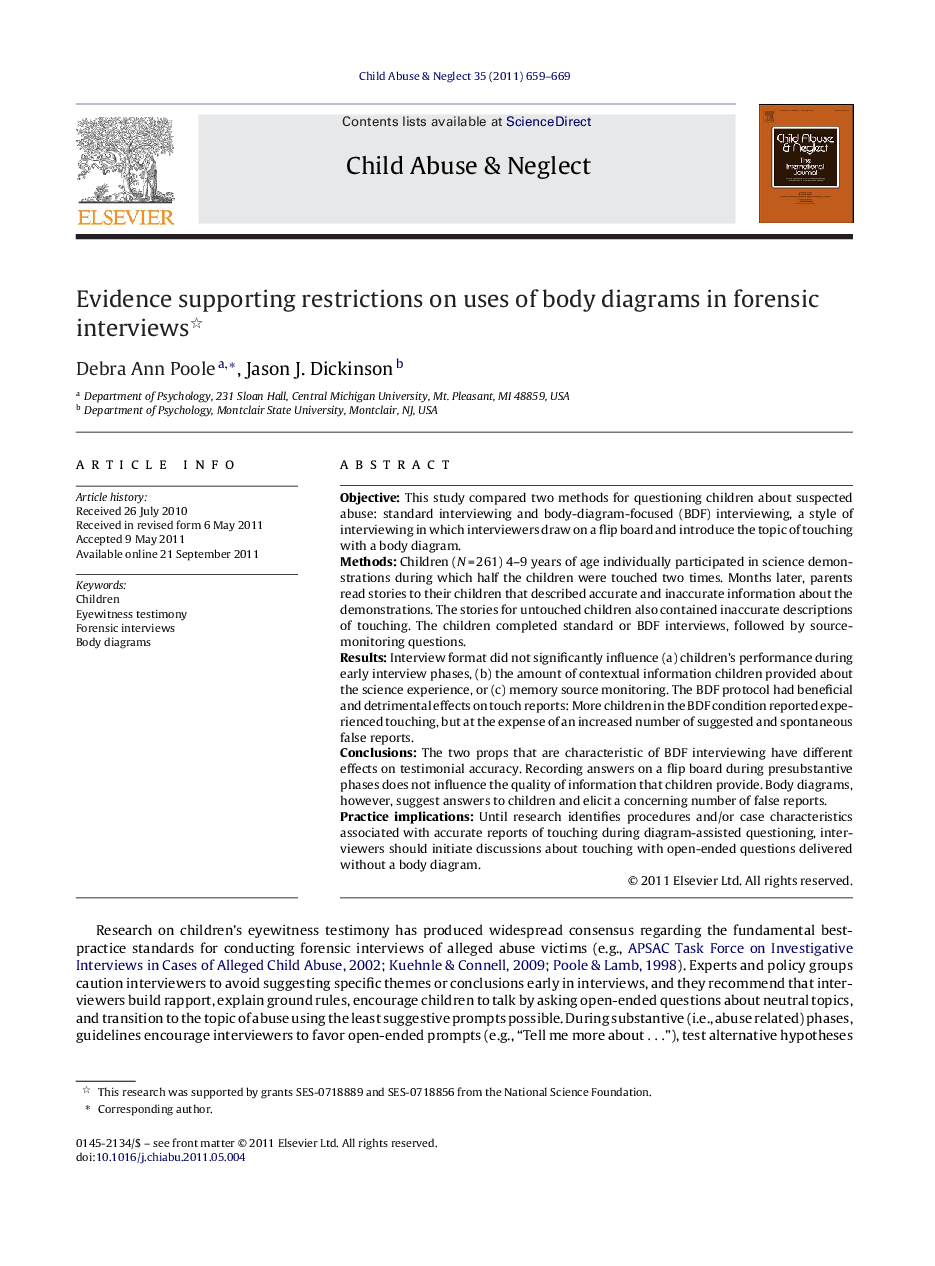| کد مقاله | کد نشریه | سال انتشار | مقاله انگلیسی | نسخه تمام متن |
|---|---|---|---|---|
| 344979 | 617468 | 2011 | 11 صفحه PDF | دانلود رایگان |

ObjectiveThis study compared two methods for questioning children about suspected abuse: standard interviewing and body-diagram-focused (BDF) interviewing, a style of interviewing in which interviewers draw on a flip board and introduce the topic of touching with a body diagram.MethodsChildren (N = 261) 4–9 years of age individually participated in science demonstrations during which half the children were touched two times. Months later, parents read stories to their children that described accurate and inaccurate information about the demonstrations. The stories for untouched children also contained inaccurate descriptions of touching. The children completed standard or BDF interviews, followed by source-monitoring questions.ResultsInterview format did not significantly influence (a) children's performance during early interview phases, (b) the amount of contextual information children provided about the science experience, or (c) memory source monitoring. The BDF protocol had beneficial and detrimental effects on touch reports: More children in the BDF condition reported experienced touching, but at the expense of an increased number of suggested and spontaneous false reports.ConclusionsThe two props that are characteristic of BDF interviewing have different effects on testimonial accuracy. Recording answers on a flip board during presubstantive phases does not influence the quality of information that children provide. Body diagrams, however, suggest answers to children and elicit a concerning number of false reports.Practice implicationsUntil research identifies procedures and/or case characteristics associated with accurate reports of touching during diagram-assisted questioning, interviewers should initiate discussions about touching with open-ended questions delivered without a body diagram.
Journal: Child Abuse & Neglect - Volume 35, Issue 9, September 2011, Pages 659–669